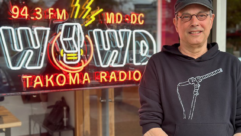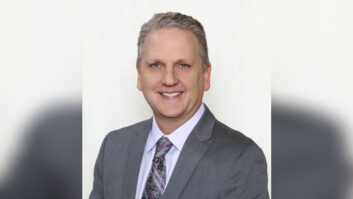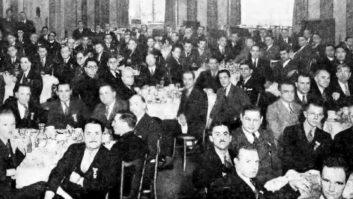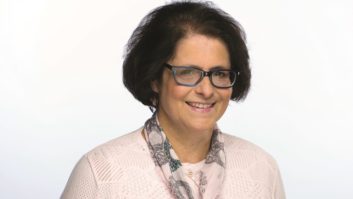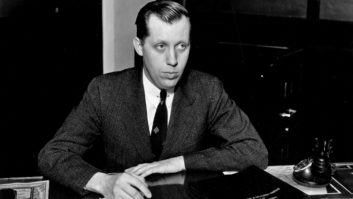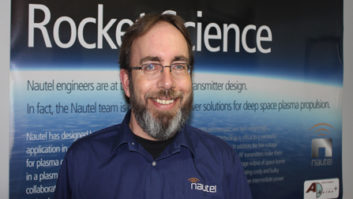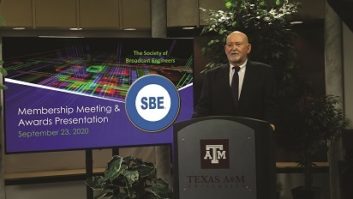A summary of tech sessions at the NAB Radio Show from the Sept. 13 special show preview edition of Radio World.
by Scott Fybush
Everything’s big in Texas — including the radio engineering.
North Texas boasts one of the nation’s biggest AM directional arrays; the 12-tower night site of KFXR 1190, 25 miles east of Dallas in Rockwall; one of the biggest FM/TV antenna farms, at Cedar Hill; and a long history of engineering innovation that includes names like Marti and Continental.
During the NAB Radio Show, engineering sessions will bring together industry experts to discuss the ever-changing world of analog and digital radio.
Broadcast Electronics is sponsoring an afternoon event on Tuesday Sept. 19, from 2–5 p.m., focused on “HD Radio: All the Basics and More.” It’s divided into three hour-long sessions. NAB lists this as part of the convention, though an attendee badge is not required; the seminar is free and held at the Miro Room at the Hilton Anatole.
The first hour focuses on the “processes, pitfalls, strategies and successes” of HD Radio implementation to date and is intended for both non-technical and technical attendees. The second hour is about technical planning and realization, including current and future system architectures, and is aimed at engineers and decision-makers. The third is for engineers and covers “nuts and bolts” tech issues.
BE repeats its seminar Wednesday afternoon.
Attendee registration for the convention opens Tuesday at 4 p.m., and there is a “meet and greet” reception from 4 to 7.
The Wednesday, Sept. 20, convention schedule offers a day of technical presentations sponsored by NAB in cooperation with SBE Dallas Chapter 67.
Morning presentations will include “Planning Considerations for Upgrading to HD,” with Alan White, Continental Electronics broadcast product engineer; “Transmitter Installation, Setup and Tuning,” with Richard Garrett, a field service manager with the company; and “System Verifications and Measurement Procedures,” with Continental Vice President for Engineering Dan Dickey.
On Wednesday afternoon, the SBE will give certification exams to candidates who have signed up in advance.
Buildout lessons
On Thursday morning, Sept. 21, the Radio Technology Forum kicks off with Geoffrey Mendenhall, vice president, radio engineering for Harris Broadcast Communications, speaking on “Real-Time Adaptive Correction” for HD Radio and DRM installations.
Steve Davis, Clear Channel Radio senior vice president, engineering, will share his recent experience on “Radio Studio Buildouts,” a subject he says has changed considerably with the advent of digital networked audio systems.
“There’s less equipment in the control rooms these days,” Davis says of his company’s recent projects, which have moved an increasing amount of gear to centralized rack rooms, leaving only control surfaces and microphones in the studios themselves.
“The typical radio station today, yes you have a live DJ,” Davis says, “but he’s playing music off an automation system, so why have all the servers in the studio?”
An increased focus on emergency preparedness is changing the face of studio design, too. Davis says generator and UPS capability has become standard in his company’s buildouts, and there’s more attention being paid to the ability to shift broadcast operations to remote backup sites in the event of a disaster.
Davis says the rollout of HD Radio multicasting has changed the way studio complexes are designed, with many production rooms doubling as studios for HD2 multicast signals.
“It’s hard to look at the crystal ball and see how much studio involvement there will be” from multicast operations in the future, Davis said.
HD FM multicasting will again be on the agenda on Thursday afternoon, when the second half of the “Radio Technology Forum” begins with a discussion of “Networking and Link Issues When Implementing Multicasting,” from Richard Hinkle, director of RF engineering at Broadcast Electronics.
The HD Radio transition encompasses AM, too, and J.S. Sellmeyer of Sellmeyer Engineering will share some of his “Adventures in AM IBOC Implementation,” with a focus on the many factors that go into presenting an optimum load to the transmitter.
Before the audio gets to the transmitter, it needs processing, and the Thursday afternoon session will include a chance to learn from one of the industry’s audio processing legends.
Frank Foti, president of Omnia Audio, will speak on “Audio Processing in Transition.” He says many engineers are still struggling to make sense of the different processing required in the HD Radio environment.
“We’ve worked hard to demystify this stuff, but you’d be surprised at some of the inquiries we’ve received,” he says, mentioning one recent station visit in which he found audio that had been processed for analog FM being fed to the HD Radio transmitter as well.
“We’re a few years into this transition now,” Foti said, “into a time when we have an opportunity and a forum” to help engineers learn all the basics of audio processing for HD Radio.
In addition to understanding the fundamentals of HD Radio processing, including proper levels and the often-challenging diversity delay, Foti says today’s engineers have to come to terms with another reality: constant change.
“Whether you like it or not, we live in a coded world, and the people who develop these codecs are always working to improve them.”
Reception
The afternoon will wrap up with discussion of the final link in the chain: signal reception. With his work for National Public Radio and its member stations, Doug Vernier of V-Soft Communications has been in the forefront of research on HD Radio coverage.
As more stations light up their HD signals, Vernier says a growing concern is the impact of digital signals on adjacent-channel analog reception.
“There’s some concern about a number of rim-shot stations providing (analog) service in cities now, that may not be able to provide service in HD,” he says.
Vernier says engineers are still learning about real-world interference issues in a world of mixed digital and analog.
“It’s the analog that takes the hit,” he says of situations where analog and HD signals on adjacent channels overlap.
Recent studies for the Corporation for Public Broadcasting are also changing some earlier ideas about the coverage range of FM digital signals. Vernier says operators of HD2 and HD3 subchannels are learning that they may enjoy solid, usable coverage only to their 93 or 94 dBu contours, a much smaller area than the typical 60 dBu contour for reliable AM coverage.
“That’s a big concern for Class A stations,” Vernier says, as well as for any stations hoping to build a reliable listener base for separate programming on HD2 and HD3 multicast subchannels.
The engineering sessions will conclude Friday with David Maxson, managing partner of Broadcast Signal Lab, presenting an in-depth look at measuring signal levels for AM and FM HD transmission, a topic that’s of growing interest as engineers learn that their usual field-strength meters may need to give way to more sophisticated spectrum analyzers.
Maxson and Don Lockett are the authors of the “IBOC Handbook,” to be published later this year by Focal Press.




